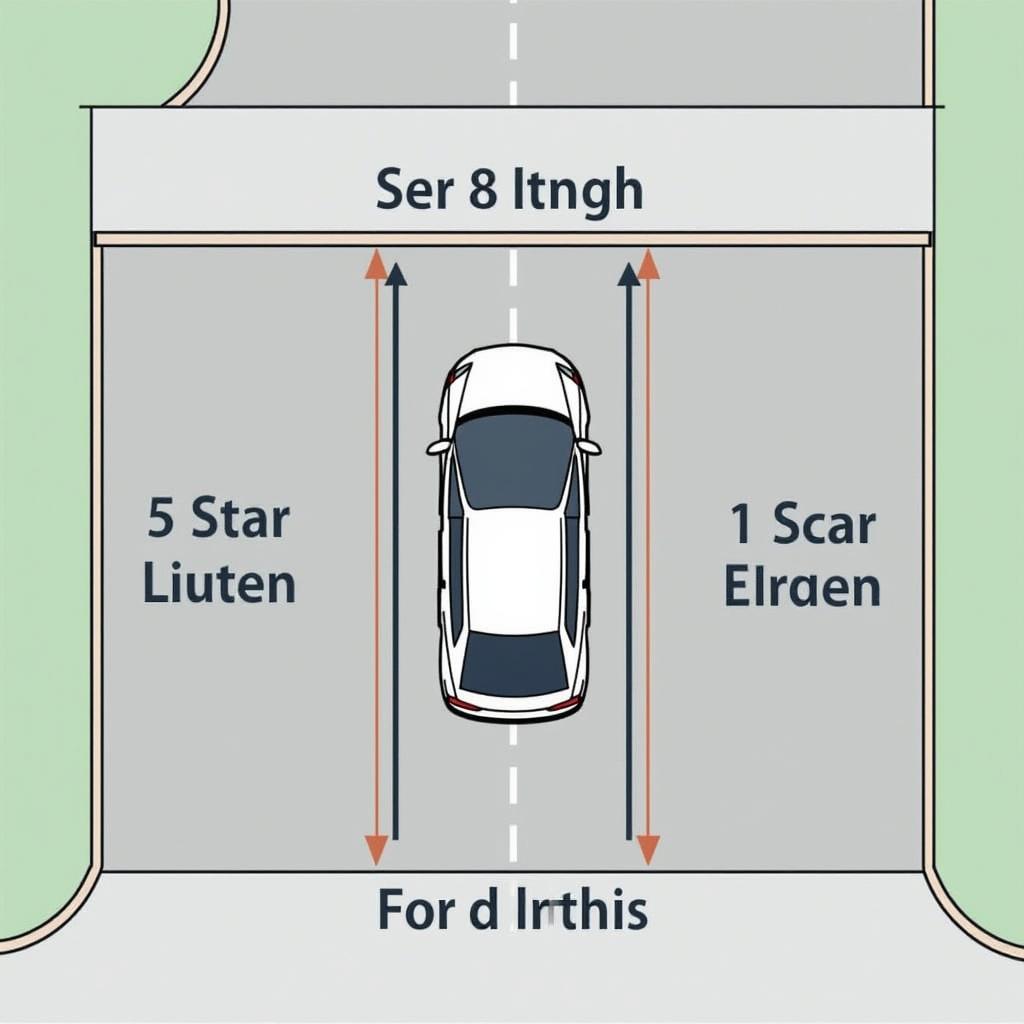Parking – for many drivers, a necessary evil often associated with stress and uncertainty. But with the right reference points, parallel parking becomes child’s play. This article provides you with all the essential information, tips, and tricks to confidently and safely maneuver into any parking spot.
The Importance of Using the Right Reference Points When Parallel Parking
Parallel parking requires a good sense of vehicle dimensions and surroundings. The correct reference points are crucial for accurately estimating the distance to other vehicles and avoiding collisions. A safe parking maneuver not only protects your own vehicle but also those of other road users. Furthermore, skilled parking demonstrates driving competence and consideration. “Precise parking is an expression of professionalism, both in private and professional contexts,” says Dr. Karl Wagner, author of “Driving Physics and Vehicle Dynamics.”
What Are Parking Reference Points?
Reference points are fixed points in the environment that help you determine your vehicle’s position while parking. These can include, for example, the taillights of the vehicle behind the spot, markings on the road, or even your own side mirrors. By observing these points, you can estimate the distance to other objects and steer your vehicle precisely into the parking spot.
Parallel Parking: A Step-by-Step Guide
- Positioning: Position your vehicle parallel to the vehicle in front of the parking spot, with a distance of approximately 50 cm (20 inches). Ensure your rear mirror is level with the rear mirror of the other vehicle.
- Reverse Gear: Engage reverse gear and check traffic.
- Steering: Turn the steering wheel fully to the right.
- Turning In: Slowly back into the parking spot and watch your reference points in the rearview mirror.
- Counter-steering: As soon as you see the taillights of the vehicle behind you in your right side window, straighten the steering wheel and continue backing up.
- Correction: If necessary, correct your vehicle’s position by moving slightly forward and backward.
 Illustration of correct parallel parking using reference points
Illustration of correct parallel parking using reference points
Advantages of Using the Right Reference Points
Using reference points offers numerous advantages:
- Increased Safety: Precise distance estimation minimizes the risk of collisions.
- Less Stress: A confident parking maneuver reduces stress and uncertainty.
- Saves Time: With practice, parking becomes quick and efficient.
- Prevents Damage: Avoiding bumps protects your vehicle from expensive repairs.
Common Questions About Parallel Parking
- Which reference points are most important? The taillights of the vehicle behind the spot and road markings are particularly important reference points.
- How do I avoid collisions while parking? Check traffic before and during the parking maneuver and use your mirrors effectively.
- What should I do if the parking spot is very tight? Practice parking in different situations to confidently maneuver even into tight spots.
Related Topics on AutoRepairAid
- Parking Assistance Systems: What systems exist and how do they work?
- Driving Safety Training: Improve your driving skills.
Parallel Parking: Become an Expert with AutoRepairAid
Want to improve your parking skills? AutoRepairAid offers professional support! Contact us for personalized advice and practical tips from our automotive experts. We are available 24/7 for you! Reach us via WhatsApp at + 1 (641) 206-8880 or via email at [email protected].
Conclusion: Practice Makes Perfect
With the right reference points and a little practice, parallel parking becomes child’s play. Use the tips in this article to improve your parking skills and safely get into any parking spot. Remember: practice makes perfect! Share your experiences and tips in the comments and help other drivers perfect their parking skills.

